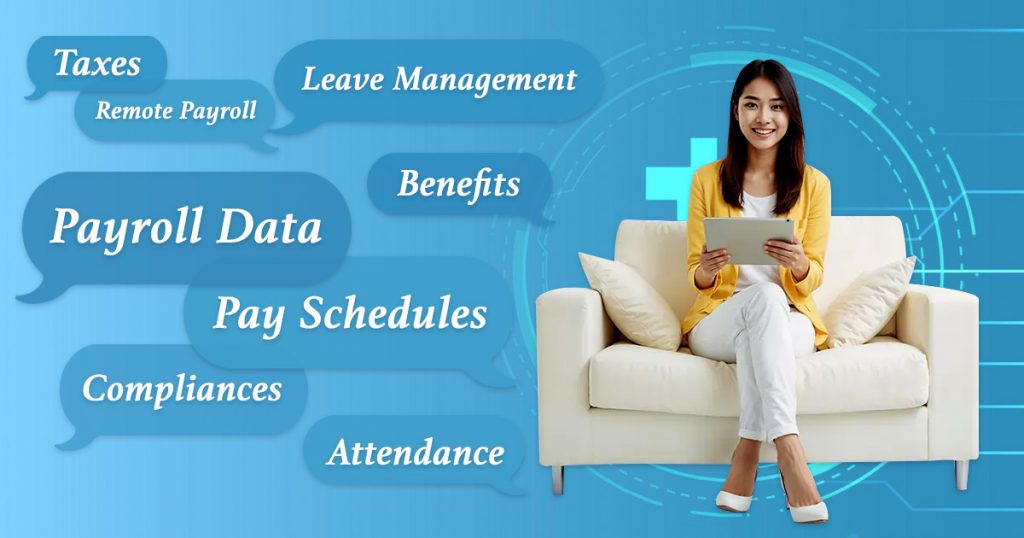Human resources professionals often face challenges in their daily tasks, and mistakes happen. What matters the most is how you handle them. Some problems, such as payroll issues, are avoidable. Errors in payroll processing can affect the entire company.
A recent IRS survey discovered that 33% of companies make payroll mistakes. In 2023, the IRS issued billions in penalties and collections. According to EY, businesses make about 15 payroll corrections per period, with each mistake costing an average of $291. While this may not seem like much, it quickly adds up.
For larger companies, the cost is even higher. EY’s survey shows that businesses with 1,000 employees spend the equivalent of 29 workweeks fixing payroll errors. That’s a lot of time and money lost to avoidable mistakes.
To avoid losing more time and money, you need to understand the payroll challenges and how to solve them.
1. Compliance with Payroll Regulations
One of the biggest payroll and compliance challenges is keeping up with ever-changing labor laws, tax regulations, and reporting requirements. Audits, sanctions, and reputational damage are all possible consequences of compliance errors.
Solution:
- Stay updated on local, state, and federal regulations.
- Invest in payroll software with automatic compliance updates.
- Consult payroll experts or hire an external auditor to ensure compliance.
- For global payroll challenges, work with local specialists to understand regional laws.
2. Managing Global Payroll Compliance
Companies with employees in multiple countries face global payroll compliance issues. Each country has its own policies in tax, benefit, and payroll regulations. Staying compliant across jurisdictions can be overwhelming.
Solution:
- Use global payroll providers that offer centralized payroll management.
- Partner with local advisors to ensure compliance in each country.
- Implement technology solutions that provide country-specific payroll compliance updates.
3. Handling Payroll Data Security
Payroll data contains sensitive information like employee details, salaries, and tax records. Cyberattacks and data breaches may damage this information, posing legal and financial dangers.
Solution:
- Use encrypted payroll systems and multi-factor authentication.
- Backup payroll data on a regular basis and do security audits.
- Teach employees how to identify and prevent cyber dangers.
4. Payroll Processing Errors
Errors in payroll processing, such as incorrect calculations, are also one of the challenges that can lead to underpayments or overpayments. This results in employee dissatisfaction and potential compliance issues.
Solution:
- Automate payroll processes to reduce human error.
- Regularly audit payroll data for discrepancies.
- Establish a process for quickly correcting errors and communicating with employees.
5. Integration with Other Systems
Many companies use separate systems for payroll, HR, and accounting. The lack of integration between these systems results in redundant entries and inconsistent data.
Solution:
- Invest in integrated payroll and HR software.
- Use APIs to connect different systems for seamless data sharing.
- Ensure regular synchronization between systems to avoid discrepancies.
6. Managing Employee Classification
Incorrect classification of employees as full-time, part-time, or contractors can result in tax and compliance issues. Misclassification affects payroll tax obligations and benefits.
Solution:
- Clearly define employee roles and classification criteria.
- Regularly review and update employee classifications.
- Seek legal advice when classifying complex roles.
7. Handling Cross-Border Payments
For global companies, paying employees across different countries and currencies is a significant challenge. Exchange rate fluctuations and varying payment methods add complexity.
Solution:
- Partner with global payroll providers that offer multi-currency support.
- Use payroll software that calculates and converts payments automatically.
- Monitor exchange rates and adjust payroll budgets accordingly.
8. Meeting Payroll Deadlines
Late payments can damage employee trust and cause compliance issues. Tight deadlines and last-minute changes make payroll processing stressful.
Solution:
- Create a payroll calendar with clear deadlines.
- Automate time-consuming tasks like tax deductions and benefits calculations.
- Build a buffer for last-minute adjustments to avoid delays.
9. Dealing with Payroll Disputes
Employees may raise disputes about incorrect payments, missing benefits, or tax deductions. These disputes can be time-consuming and impact morale.
Solution:
- Maintain detailed payroll records for easy reference.
- Establish a transparent payroll policy and communicate it to employees.
- Create a dedicated payroll support team to handle disputes promptly.
10. Tracking Remote Employees’ Payroll
With remote work becoming more common, payroll management for remote employees in different states or countries can get complicated. Tax requirements and benefits may vary based on the employee’s location.
Solution:
- Use payroll software that supports multi-state and international payroll.
- Monitor employee whereabouts and guarantee compliance with local tax rules.
- Update policies to address remote work payroll challenges.
In summary, payroll challenges are inevitable, especially for growing businesses or those operating internationally. From compliance and data security to managing global payroll, these issues can seem daunting. However, by implementing the right solutions—such as using automation, integrating systems, and working with payroll experts—you can streamline payroll processes and reduce risks. Staying proactive and knowledgeable will allow you to properly address these difficulties.
By addressing these payroll and compliance challenges, your business can ensure accurate payroll processing, remain compliant with global payroll regulations, and keep employees satisfied.

